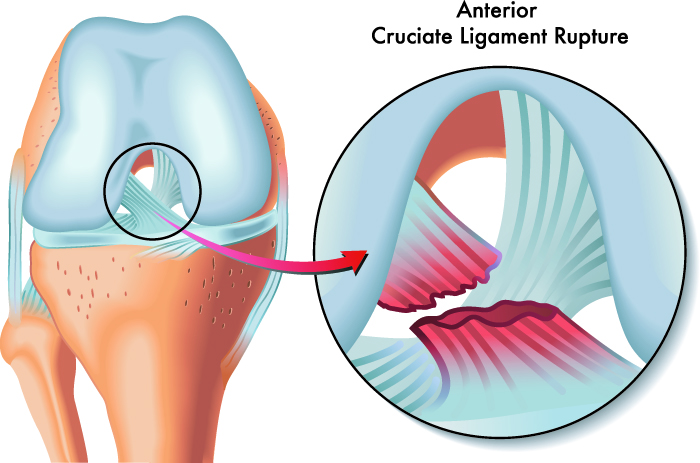Ligament Tear Treatment in C-scheme, Jaipur
A ligament is a strong band of fibrous tissue that joins two bones or two pieces of cartilage together. Ligaments are incredibly robust, yet they can be strained or damaged, leading to a variety of sprain grades. A ligament tear generally happens when a joint is subjected to a great deal of stress, such as during a fall or another high-impact incident. Ligament rips in the ankle, knee, wrist, thumb, neck, and back are very common.
What Are the Symptoms of Ligament Tears?
When a ligament is torn, it hurts and is delicate to the touch. Swelling and bruising are possible side effects. The joint may be difficult to move. At the time of the injury, you may hear a snap or feel ripping in certain ligaments. Muscle spasms are another possibility. Ligaments provide stability and strength to joints. Their major job is to keep the skeleton's bones in the appropriate alignment and to keep the joints from moving abnormally. When a ligament is ripped, movement is hampered, resulting in joint looseness or inability to move the joint normally.

Causes Of Ligament tear
A ligament tear can occur when a joint is forced out of its natural position. This might happen as a result of a fall, an abrupt twisting, or blow to the body
Ligament injuries are more prevalent during sports activity since joints are constantly in use and under a lot of stress. Ankle, knee, and wrist ligaments are often affected.
How Is Ligament Tear Diagnosed?
A physical examination and medical history are used to diagnose a ligament injury. The specialists at Apollo Spectra, Jaipur will begin by inquiring as to what you were doing at the time of the injury and will inspect the area. They can determine the degree of the damage by palpating the area and manipulating the joint.
An X-ray is usually taken to check for cracked or shattered bones. To assess if a partial or full ligament rupture exists, magnetic resonance imaging (MRI) may be used.
The amount of ligament tearing is one of the parameters used to grade sprains.
How Can We Treat Ligament Tears?
The initial treatment regimen for a ligament injury is R.I.C.E. (rest, ice, compression, and elevation).
- Rest: Once an injury has occurred, any activity that stresses the affected region must be discontinued until the injury has had time to heal.
- Ice: Applying cold to an injured region gives temporary pain relief and helps reduce swelling.
- Compression: (covering the wounded region in an elastic bandage, for example) helps decrease and restrict general edoema. It can also help with pain relief on occasion.
- Elevation: This reduces edoema by controlling blood flow to the region. When the wounded region is elevated above the level of the heart, this method is most effective.
For pain and swelling, the doctors at Apollo Spectra, Jaipur, might prescribe an over-the-counter (such as ibuprofen) or prescription medicine.
A grade 2 sprain may require bracing to allow the partial ligament tear to heal. The length of time a brace is required is determined on the location and severity of the injury. A grade 3 sprain may necessitate ligament repair surgery.
Your healthcare practitioner may prescribe physical therapy or home exercises to help restore the ligament and joint's function once the pain and swelling have gone. Depending on the degree of the ligament tear, healing time might range from a few weeks to a year.
Request an appointment at Apollo Spectra Hospitals, Jaipur
Call 1860 500 2244 to book an appointment.
Conclusion
A sprain is a damage to the ligament, a band of collagen tissue that links two or more bones to a joint. A ligament's principal purpose is to provide passive joint stabilisation, and it also plays an essential part in proprioceptive function. A sprain occurs when a joint is unexpectedly pressed beyond its normal range of motion, stretching the inelastic fibres beyond their breaking point. Excessive inversion of the ankle, for example, might rupture the lateral ankle ligaments, particularly the anterior talofibular ligament. A severe sprain might resemble a break in appearance and feel, making it difficult for doctors to distinguish between the two.
Having reconstructive surgery as soon as possible following an injury is often the best option. This is before the onset of muscle atrophy and knee stiffness. As a consequence, you will recover the quickest.
In general, reconstructive surgery is not necessary and may be postponed to accommodate work and personal obligations. Sport and activities that require a change of direction should be avoided at this period. Cycling is a great way to keep some “straight line” fitness exercises going.
Symptoms
Our Top Specialities
NOTICE BOARD
CONTACT US
CONTACT US
 Book Appointment
Book Appointment


.svg)
.svg)
.svg)
.svg)








